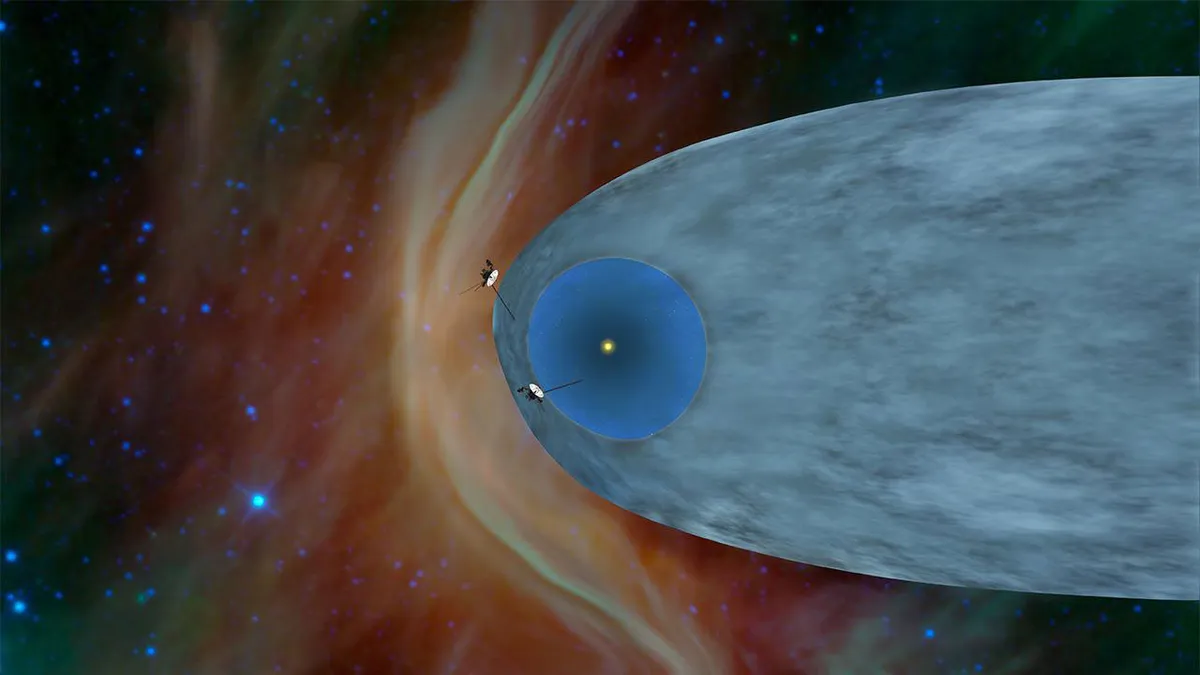NASA has lost contact with the Voyager 2 spacecraft, after a human error nudged its antenna away from Earth.
NASA hope the spacecraft will automatically realign its antenna and re-establish contact later in the year.
Voyager 2 is currently 19.9 billion kilometres from Earth, sailing out of our Solar System into interstellar space.
It is so far away it takes it?s signals 18 hours to reach Earth.
On 21 July, NASA sent a command to the spacecraft that accidentally misaligned its antenna by two degrees.
Though only slightly off target, the spacecraft is now unable to communicate with Earth, causing NASA to lose contact with Voyager 2.
 The Deep Space Network consists of three facilities: one near Barstow, California; one near Madrid, Spain; and, pictured above, one near Canberra, Australia. Credit: NASA / JPL-Caltech
The Deep Space Network consists of three facilities: one near Barstow, California; one near Madrid, Spain; and, pictured above, one near Canberra, Australia. Credit: NASA / JPL-Caltech
NASA will continue to hunt for any signals using the Deep Space Network ? a collection of three radio facilities in California in the US, Madrid in Spain and Canberra in Australia ? which it uses to communicate with all of its interplanetary missions ? for the next week or so, but the chances of finding any are slim.
Fortunately, the Voyager was built with such an eventuality in mind and so the spacecraft automatically realigns its antenna with Earth several times a year.
The next such alignment is due on 15 October.
The team will be listening out for it then in the hopes of re-establishing contact.
What was Voyager 2?s mission?
Voyager 2 launched from Earth on 20 August 1977, 16 days before its sister craft Voyager 1, with the aim of taking advantage of a once in a lifetime alignment of the outer planets.
It flew past all four of the major outer planets, passing Jupiter in 1979, Saturn in 1981, Uranus in 1986 and Neptune in 1989.
To this day, Voyager 2 remains the only spacecraft to have visited either of the ice giants, Uranus and Neptune.
 Uranus (left) and Neptune (right), as seen by the Voyager 2 spacecraft. Credit: NASA/JPL-Caltech; NASA
Uranus (left) and Neptune (right), as seen by the Voyager 2 spacecraft. Credit: NASA/JPL-Caltech; NASA
Where is Voyager 2 now?
Voyager 2 is travelling away from the Sun and is currently 130 times the distance between the Earth and Sun away, (around 19.9 billion km).
On 5 November 2019, its instruments indicated it had passed beyond the Sun?s protective, magnetic bubble and was now in interstellar space.
Currently, Voyager 1 and 2 are the only spacecraft that have transmitted data from this distant region.
 Voyager 2 has passed through the heliopause, into interstellar space. The bubble of particles and magnetism surrounding the Sun known as the heliosphere is stretched out behind the Sun as it moves through the Galaxy. Image Credit: NASA
Voyager 2 has passed through the heliopause, into interstellar space. The bubble of particles and magnetism surrounding the Sun known as the heliosphere is stretched out behind the Sun as it moves through the Galaxy. Image Credit: NASA
What will happen to Voyager 2 now?
The spacecraft's days were already numbered, even before NASA lost contact with Voyager 2.
After travelling for 46 years, the spacecraft?s radioactive fuel has, considerably, reducing its power output.
The mission?s operators have eeked out the mission by slowly shutting down various instruments, but current estimates say that by 2026, it will no longer have enough power to operate any of its instruments.
However, NASA will still attempt to re-establish contact to gain a few final years of insight from the venerable spacecraft.

